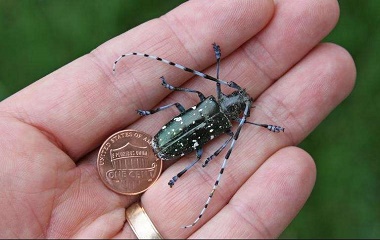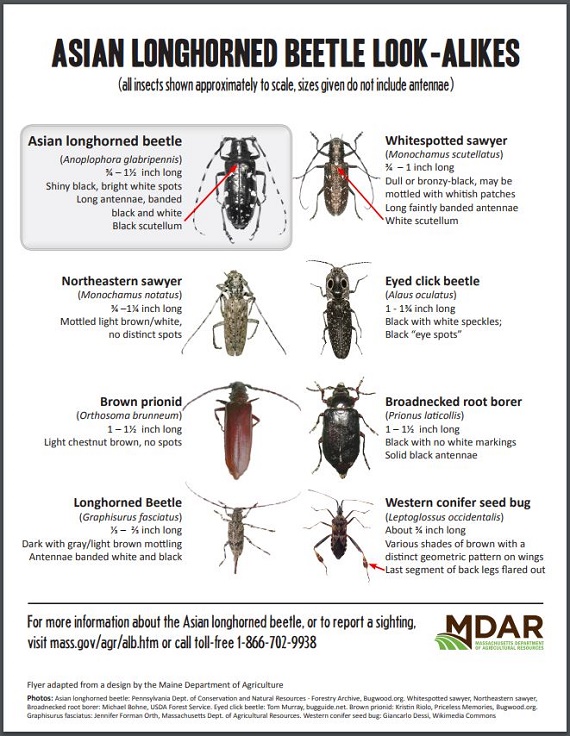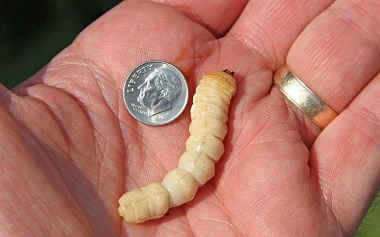What to look for
How to Identify the Asian Longhorned Beetle

Asian longhorned beetle is not known to occur in Iowa; however this insect is one that we want to catch early if accidentally introduced. Listed below are the characteristics of the beetle and what to look for.
Eradication attempts and quarantines have been successful regarding this pest, especially when it was found in the beginning stages of infestation. If you live in Iowa and suspect Asian longhorned beetle as a new introduction to your area, please contact us, and we would be happy to take a look.



